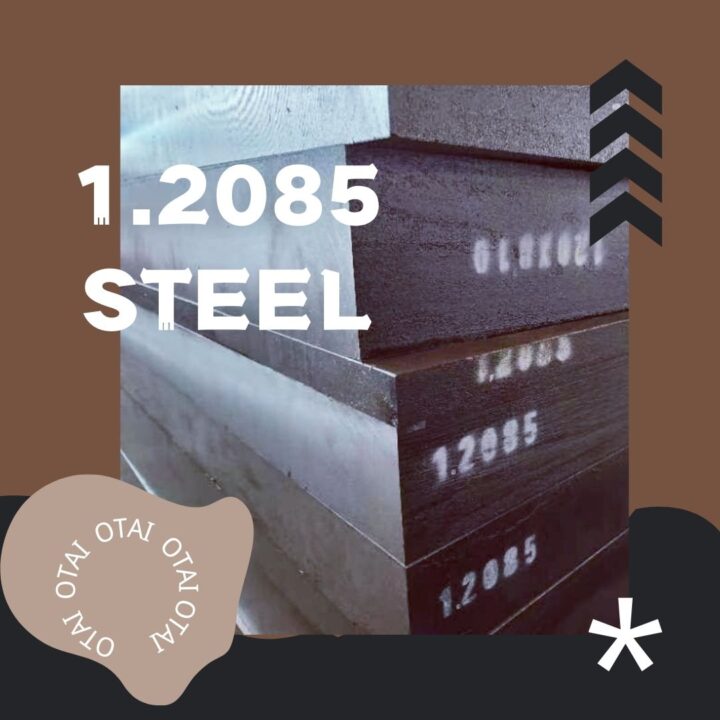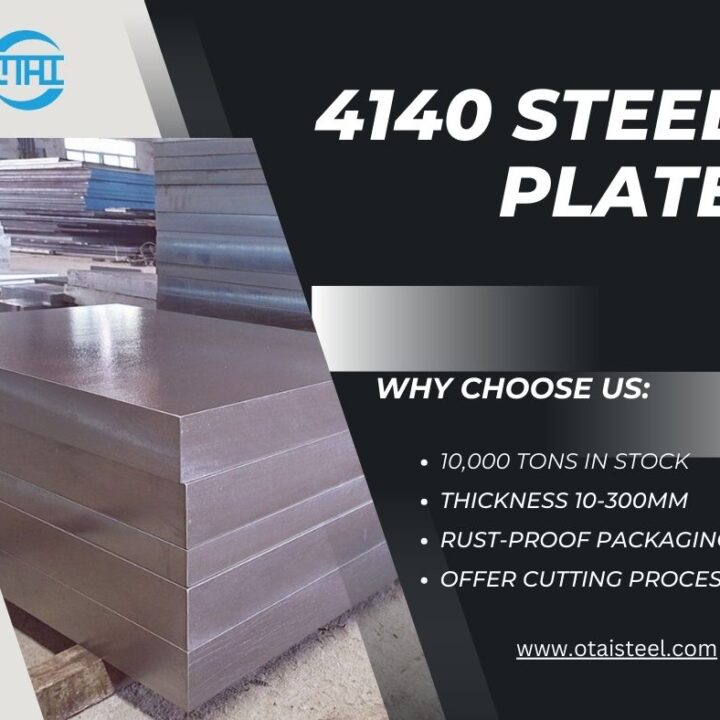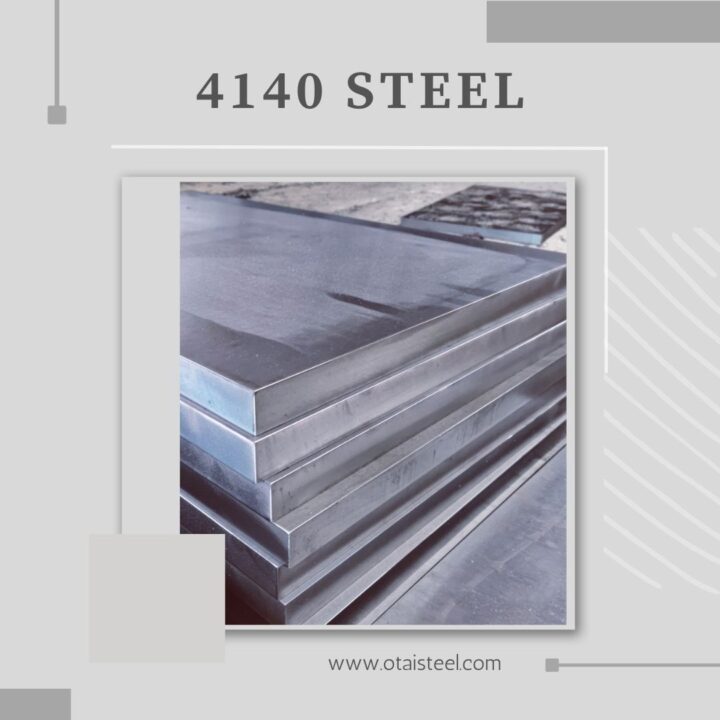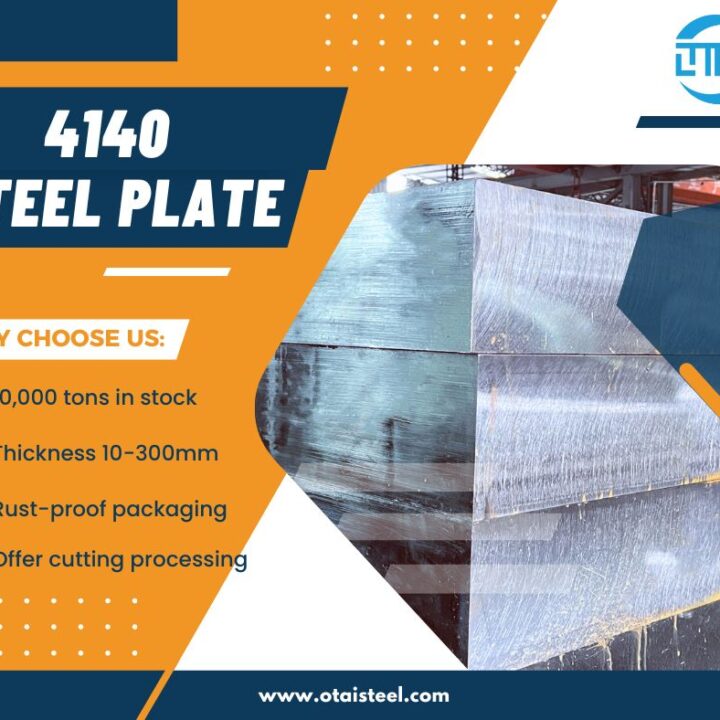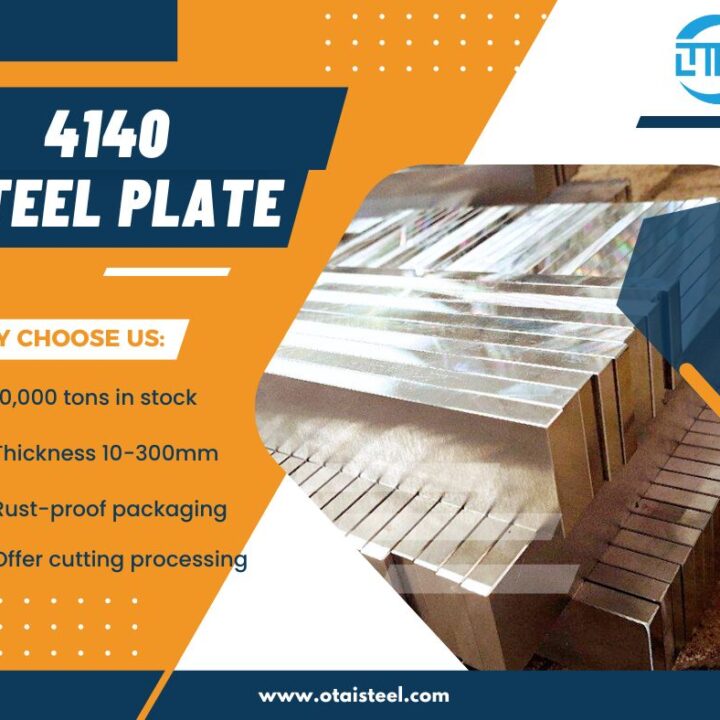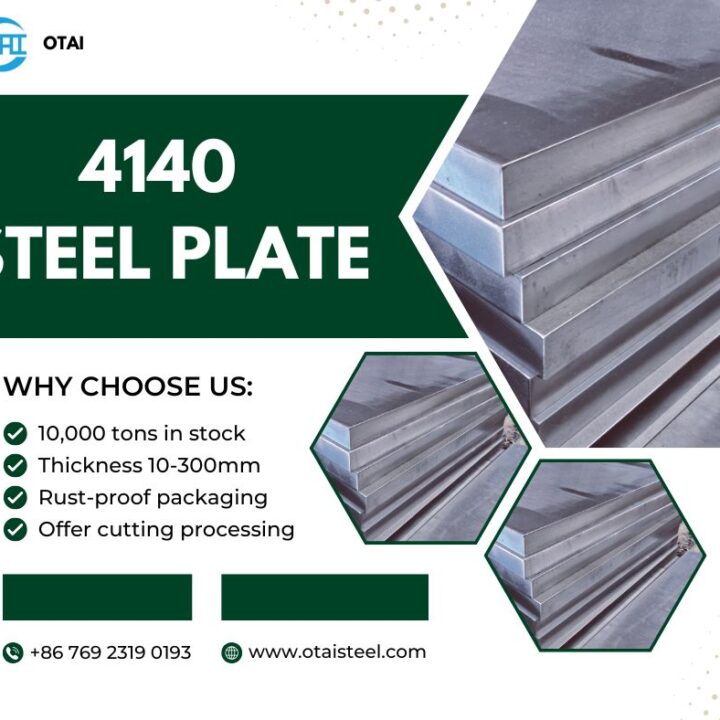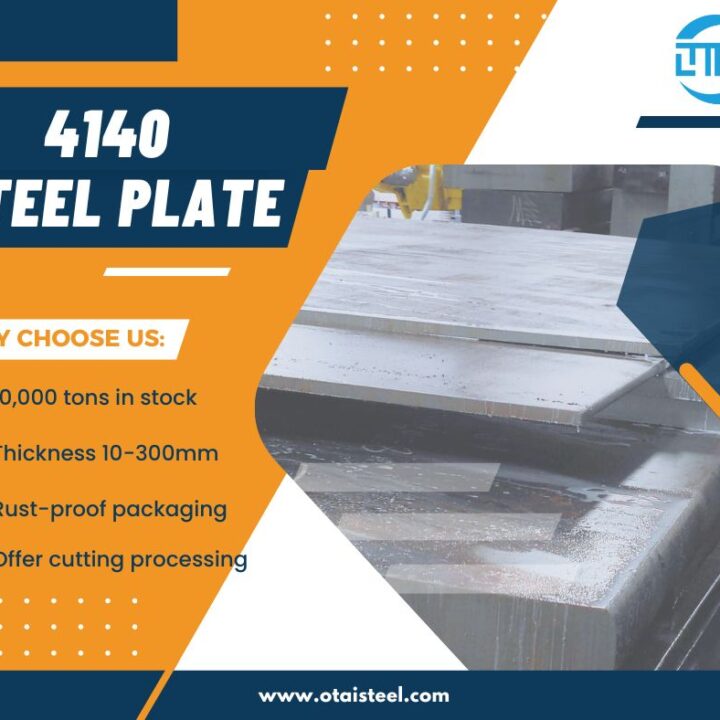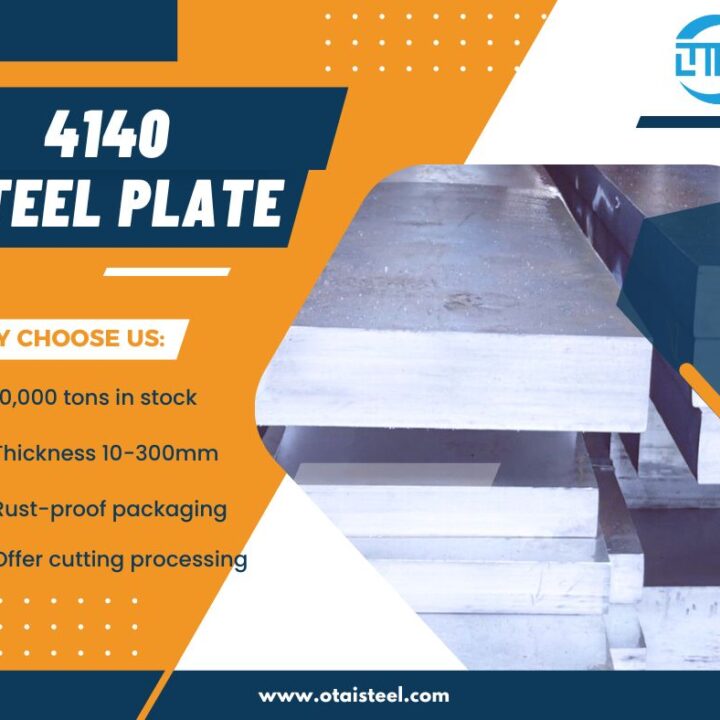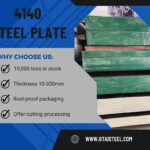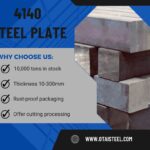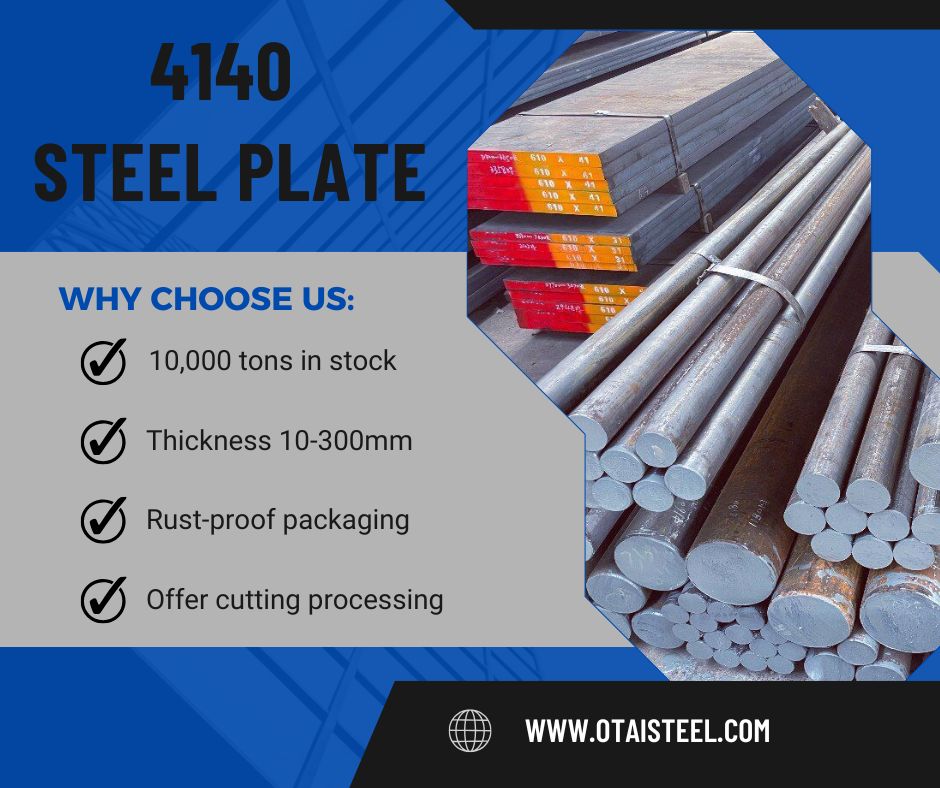 4140 Steel Properties – The Key to Stronger, Tougher Components
4140 Steel Properties – The Key to Stronger, Tougher Components
When it comes to versatile and high-performance alloy steels, 4140 steel is one of the most widely used materials in manufacturing, automotive, and oil & gas industries. Its unique combination of strength, toughness, and wear resistance makes it a favorite among engineers and buyers worldwide. In this article, we’ll explore 4140 steel properties in depth, including chemical composition, mechanical properties, heat treatment process, and real-world applications.
🔬 What is 4140 Steel?
🧪 4140 Steel Chemical Composition
The chemical composition of 4140 steel is carefully balanced to achieve its performance characteristics.
| Element | Content (%) | Function |
|---|---|---|
| Carbon (C) | 0.38 – 0.43 | Improves strength & hardness |
| Chromium (Cr) | 0.80 – 1.10 | Increases hardenability & wear resistance |
| Molybdenum (Mo) | 0.15 – 0.25 | Improves toughness & high-temp stability |
| Manganese (Mn) | 0.75 – 1.00 | Boosts hardenability and tensile strength |
| Silicon (Si) | 0.15 – 0.35 | Improves strength & elasticity |
| Phosphorus (P) | ≤ 0.035 | Kept low to avoid brittleness |
| Sulfur (S) | ≤ 0.040 | Improves machinability slightly |
This alloy balance allows 4140 to respond well to heat treatment processes like quenching, tempering, and nitriding.
💪 4140 Steel Mechanical Properties
4140 steel offers excellent mechanical properties, making it suitable for components subjected to heavy loads, torsional stress, and impact.
| Property | Annealed Condition | Quenched & Tempered |
|---|---|---|
| Tensile Strength | 655 MPa | Up to 1080 MPa |
| Yield Strength | 415 MPa | Up to 950 MPa |
| Elongation | ~25% | ~12% |
| Impact Strength | High | Very High |
| Hardness (HB/HRC) | ~197 HB | 28–32 HRC (can go up to 50+ HRC with special tempering) |
These numbers show why 4140 is such a popular choice for load-bearing parts. After heat treatment, its strength nearly doubles while maintaining good toughness.
🔥 Heat Treatment Process
One of the key advantages of 4140 is that its properties can be customized through heat treatment.
-
Annealing – Heated to 800–850°C, then furnace cooled to soften the material, improving machinability.
-
Quenching & Tempering – Heated to ~850°C, quenched in oil/water, then tempered at 400–650°C. This produces hardness in the range of 28–38 HRC.
-
Nitriding – A low-temperature process that diffuses nitrogen into the surface, achieving a surface hardness of 55–60 HRC while keeping the core tough.
-
Stress Relieving – Heated to 540–680°C after machining to remove internal stresses and prevent distortion during service.
The ability to choose different processes allows engineers to meet specific strength, wear, and fatigue requirements.
🛠️ Machinability and Workability
Despite its high strength, 4140 steel machinability is considered good, especially in the annealed state. Its machinability rating is about 65% relative to 1112 free-cutting steel. For best results:
-
Use sharp cutting tools with proper coolant.
-
Pre-machine before quenching and tempering to reduce tool wear.
-
For welding, preheat to 200–300°C and stress-relieve afterward to prevent cracking.
This makes 4140 a practical choice for manufacturers who need both high strength and cost-effective processing.
🏗️ 4140 Steel Applications
The combination of tensile strength, toughness, and hardenability makes 4140 extremely versatile.
| Industry | Typical Applications |
|---|---|
| Automotive | Crankshafts, steering knuckles, axle shafts |
| Oil & Gas | Drill collars, tool joints, downhole tools |
| Manufacturing | Gears, spindles, shafts, bolts |
| Heavy Equipment | Couplings, sprockets, machine components |
| Aerospace | Structural parts requiring strength & fatigue resistance |
Its ability to withstand cyclic loading, impact, and wear makes it a material of choice for parts where reliability is critical.
📊 4140 Steel vs Mild Steel Properties
Many engineers compare 4140 to mild steel like A36. The difference is significant:
| Property | 4140 Steel | Mild Steel (A36) |
|---|---|---|
| Tensile Strength | 655–1080 MPa | ~400 MPa |
| Yield Strength | 415–950 MPa | ~250 MPa |
| Hardness (HB) | 197+ | ~120 |
| Hardenability | Excellent | Very Low |
| Fatigue Resistance | High | Low |
This shows why 4140 is chosen for critical parts rather than general structural steel.
🌟 Why Choose Otai Special Steel?
At Otai Special Steel, we maintain over 10,000 tons of 4140 steel plates and bars in stock, with thicknesses ranging from 6mm to 300mm. Our advantages include:
-
✅ Reliable Quality – Ultrasonic testing (UT) and chemical analysis for every batch
-
✅ Flexible Services – Customized cutting, heat treatment, and packaging
-
✅ Competitive Pricing – Direct factory supply to lower your cost
-
✅ Global Reputation – Long-term partnerships with leading companies like Thyssenkrupp and Schlumberger
-
✅ Fast Delivery – Stable inventory for quick shipment
We are committed to being your one-stop solution for 4140 steel procurement.
❓ FAQ
Q1: What is the maximum hardness 4140 steel can achieve?
A: After quenching and tempering, 4140 can reach 50-55 HRC depending on tempering temperature.
Q2: Is 4140 steel weldable?
A: Yes, but preheating and post-weld stress relief are recommended to avoid cracking.
Q3: What is the machinability rating of 4140 steel?
A: It has a machinability rating of around 65% compared to 1112 free-cutting steel.
Q4: Can 4140 steel be surface-hardened?
A: Yes, nitriding or induction hardening can increase surface hardness while keeping the core tough.
Q5: How does 4140 compare to 4340 steel?
A: 4340 offers slightly higher strength and toughness, but 4140 is more cost-effective and widely available.

